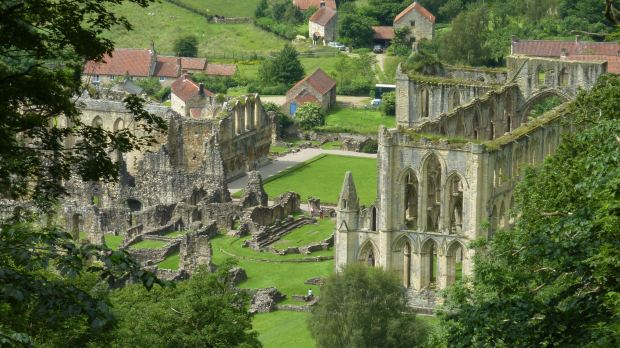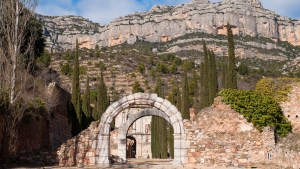A new archaeological excavation is taking place in northern England. Near the town of Helmsley, within the North York Moors National Park, a high-status medieval farm that was managed by the Cistercian Rievaulx Abbey is being unearthed. According to the article published by Medievalists.net, the finds include rosary beads, pottery and glazed tiles.
Rievaulx was founded in 1132 by 12 monks from Clairvaux Abbey in France (St. Bernard’s own foundation). It soonbecame one of the greatest British abbeys: At its peak, 650 people actively lived and worked there, including monks, direct and indirect employees and other officials associated with the maintenance of monastic activities, including the farm.
The excavation of this medieval farm is funded by the North York Moors National Park Authority, the tenant farmer and a local archaeologist, Medievalists.net explains. As is often the case with this kind of excavation, local volunteers took part in the dig.
Henry VIII’s dissolution of the monasteries.
From 1536 to 1541, through a set of administrative and legal processes, Henry VIII transferred the ownership of abbeys, churches, monasteries and other possessions of the Catholic Church in England to the treasury of the English crown.
Among these, countless manuscripts, libraries, works of art, farms and other productive buildings were taken over by the government – including those owned or managed by monasteries and abbeys. Those that were not destroyed, expropriated, or simply shut down were handed over to political allies.
These expropriations would provide Henry VIII with an extraordinary, unexpected income without resorting to deeply unpopular measures (such as higher taxes), while also eliminating the influence of the Roman papacy over the English crown.
On December 3, 1538, Henry VIII ordered the monks of Rievaulx to leave the building, expropriating every valuable object in it – particularly the lead used in stained glass, which was melted down and used to make ammunition.
Today, a museum is housed in the abbey, led by English Heritage, a charity that is responsible for the preservation of more than 400 historic sites across England. The museum exhibits some of the artifacts that monks once used at the abbey, and chronicles of the history of the Cistercian Order in England.
Make sure to visit the slideshow below to appreciate the ruins of Rievaulx abbey.




